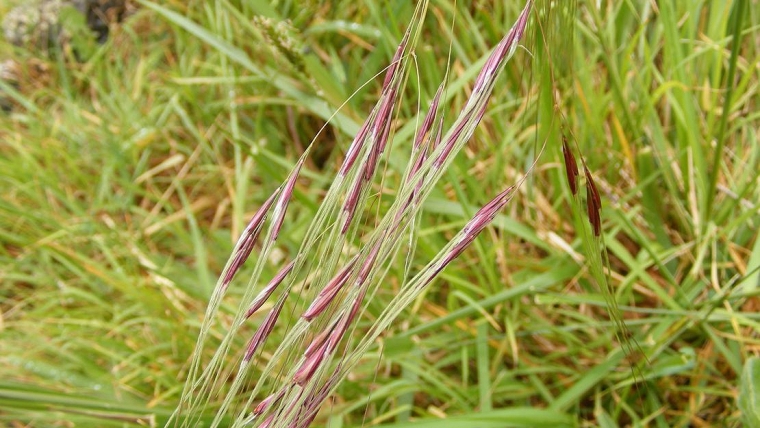
The following is a press release from the Environmental Protection Agency.
The Environmental Protection Authority (EPA) has approved the release of a rust fungus to control the spread of Chilean needle grass, an invasive weed that not only harms animals, but has the potential to cost farmers millions of dollars in lost production.
Marlborough District Council applied to use a strain of rust fungus, Uromyces pencanus, as a biocontrol agent against Chilean needle grass ( Nassella neesiana) in New Zealand.
"We hope the introduction of this rust fungus will help slow the spread of this aggressive weed and reduce harm to livestock and other farm animals," says Dr Chris Hill, General Manager, Hazardous Substances and New Organisms.
"Testing shows this rust fungus can successfully slow infestations, killing the foliage of the Chilean needle grass as well as reducing its growth and seed production.
"This rust fungus is highly host-specific, meaning it only lives on Chilean needle grass.
"The testing results provided to us showed it is highly unlikely to harm native plants or animals. There is also no risk to people."
Chilean needle grass is a perennial grass from South America and was first identified in New Zealand in the 1920s.
The seeds have sharp tips that can bore into the eyelids and pelts of animals, resulting in severe animal welfare issues, including blindness.
Plants form dense clumps, which exclude pasture species and are less palatable to stock, reducing farm productivity.
Methods for managing Chilean needle grass infestations on farms, such as destocking for the three-month period when seeds are present, or by applying herbicide, can be both difficult and expensive.
One study estimates that across the sector, the potential cost of lost production could reach as much as $1.16 billion, if the weed is left unchecked.
Chilean needle grass is well established in some regions, particularly Hawke’s Bay, Marlborough, Auckland and Canterbury
"Our panel of independent experts approved this release following a rigorous, evidence-based investigative process which included the consideration of public submissions, international best practice and engagement with mana whenua."
In recent years the EPA has approved other biocontrol agents for weeds such as old man’s beard, Sydney golden wattle and moth plant, amongst others.
8 Comments
Hope it works. Now we just need something to get rid of goats, deer, pigs, rats, cats, possums, mustelids and not to mention the numerous other weeds. Talking about destroying the environment did I mention humans?
With terms used like "highly unlikely to harm native plants or animals", hope is all we have.
Its not like any other introduced fungus has caused issues or widespread devastation of crops before. /s
Well, I managed to shoot my first possum, but the rats are so big , they demolished the plastic rat traps. The task is huge, and we don't seem to be getting anywhere.
I don't think we will get anywhere really solardb, probably make inroads in some areas but pest free 2050 is just a dream.
There are some pockets of success.
But I do wonder if it's best to focus, maybe concentrate on doing the larger habituated Islands, like Stewart Island, great barrier island etc first. Say get Stewart Island pest free, move onto the next one.
Unfortunately, the peninsula areas on the mainland seem to have local opposition to pest proof fences.
https://link.springer.com/article/10.1023/B:BINV.0000022130.54793.b7
The problem is that many biocontrols end up (or even start) not being specific...
Very difficult to assess the risks to every other possible target.
Would have thought a drone type applicator could identify and spray this distinctive looking grass.

We welcome your comments below. If you are not already registered, please register to comment
Remember we welcome robust, respectful and insightful debate. We don't welcome abusive or defamatory comments and will de-register those repeatedly making such comments. Our current comment policy is here.